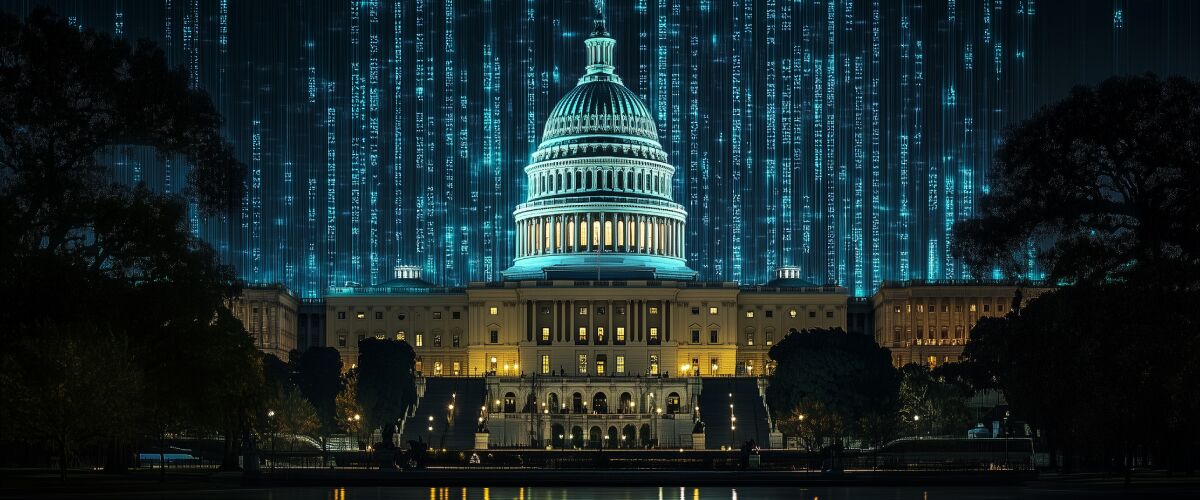Brennan Center Unveils Secret PEADs, But Most Remain Classified
In May 2022, we welcomed the news that the Brennan Center for Justice had published a batch of formerly secret government documents dating back to the 1950s. These files relate to Presidential Emergency Action Documents (PEADs)—secret plans drafted to ensure “Continuity of Government” (COG) in the aftermath of a nuclear war and, later, in other emergency conditions. The Brennan Center received around 500 pages through a Freedom of Information Act inquiry. But, 6,000 pages remain classified and were not released.
The Evolution of PEADs: From Nuclear War to Terrorist Attacks
For nearly half a century, PEADs dealt solely with contingency plans for the government to continue operating after a Soviet nuclear attack. Since the 9/11 attacks, the scenarios for using PEADs have been expanded. They now include terrorist attacks and possibly other emergency situations.
Among the powers that PEADs reportedly grant the government are the authority to impose martial law, round up and detain individuals deemed a security risk, confiscate private property, impose price controls, ration food, revoke passports, and censor foreign news broadcasts.
Free Wealth Protection Insights
Enter your email below to receive our weekly briefings on better ways to preserve your wealth, legally reduce your tax bill, and better protect what you’ve worked hard to build.
The Nestmann Group does not sell, rent or otherwise share your private details with third parties. Learn more about our privacy policy here.
PLEASE NOTE: This e-series will be delivered to you via email. You should receive your first message minutes after joining us. By signing up for this course, you’ll also start to receive our popular weekly publication, Nestmann’s Notes. If you don’t want to receive that, simply email or click the unsubscribe link found in every message.
The Secrecy Surrounding Presidential Emergency Action Documents (PEADs)
The 56 PEADs that appear to currently be in effect are classified as “secret.” None have ever been declassified or leaked. Interestingly, it appears they’re not even subject to congressional oversight. Media coverage of the document cache received by the Brennan Center focused on these facts and on efforts by some in Congress to require presidents to submit all PEADs to Congress for review.
A Continuous State of Emergency: The Broader Context
What went mostly unsaid in the media reports—although the Brennan Center itself did mention it—is that Americans have been living under a continuous state of emergency since November 14, 1979, which has nothing to do with PEADs. On that date, President Jimmy Carter ordered the seizure of more than $12 billion in Iranian assets. This order was the first declared national emergency after the enactment of a 1976 law called the National Emergencies Act (NEA), which terminated all previous national emergencies. Since then, 70 additional states of emergency have been declared, and 40 of them remain in effect.
Proclamation 7463: A Case Study in Prolonged Emergency Powers
Consider Proclamation 7463, which came into effect on September 14, 2001—three days after 9/11. This document, signed by President George W. Bush, gave the government emergency powers to use military force against al-Qaeda, the terrorist organization that took credit for the 9/11 attacks.
The NEA requires Proclamation 7463 and all other national emergencies to be renewed annually and reviewed every six months by Congress. However, even though Al Qaeda has largely been dismembered, Bush and his successors have renewed this emergency declaration 20 times, most recently in September 2021. Notably, Congress has never reviewed Proclamation 7463 or most other national emergencies despite the legal requirement to do so.
The Reach of National Emergency Powers
National emergencies can be invoked under 136 statutory powers. However, most of them are authorized under a 1978 law called the International Emergency Economic Powers Act, or IEEPA. Most IEEPA emergencies are sanctions against specific individuals, groups, or countries. An example is President Carter’s 1979 freeze of Iranian assets.
Despite the word “international” in its title, the IEEPA gives the president executive control over the entire US economy. With a stroke of a pen, the president can shut down entire sectors of the economy. This includes the foreign exchange markets and international wire transfer networks. The president may unilaterally ban all transactions with any person or entity and freeze their assets without a criminal conviction, a criminal charge, or even an administrative hearing. Indeed, according to the Treasury Department, it has the power to confiscate “any financial instrument” under IEEPA.
The Potential for Economic Catastrophe
There’s little doubt that the use of this authority would provoke an enormous political backlash if done on a large scale. However, there have been no political consequences after the Treasury Department’s Office of Foreign Assets Control (OFAC) froze the assets of individuals mistakenly deemed enemies of the state. This is due to national emergency declarations issued under IEEPA.
If the president believes a general asset confiscation is needed, the International Monetary Fund has a playbook on how to do it. The IMF declared in a 2013 report that this would be a good option to prop up cradle-to-grave welfare states. The report suggests a “one-off capital levy”—outright confiscation—of 10% or more of private savings for that purpose.
A Scenario Worth Considering
Here’s how this scenario might unfold. Imagine a financial meltdown worse than the one that started in 2007. Over-leveraged American megabanks are again facing financial ruin, as they did then. The government would likely have the Fed drop interest rates to zero. Then, it would buy the megabanks’ distressed assets with newly created money. This is the same quantitative easing (QE) strategy it used during that crisis and again in 2020 with COVID-19.
The problem is that dropping interest rates to zero would be highly inflationary. Massive QE would further spur inflation. With official inflation rates hovering around 8% and real inflation rates close to 17%, the Fed can’t take these steps without risking hyperinflation. However, without the Fed’s support, Wall Street’s megabanks could collapse, perhaps in a matter of days or even hours.
That outcome won’t be allowed to happen because it would likely lead to an almost immediate global financial collapse as the crisis spreads internationally, as it almost certainly would. Instead, Uncle Sam will need to find a way to recapitalize their balance sheets. For instance, the president could invoke the IEEPA to carry out the IMF’s capital levy. The president could let unpopular banks fail and use bail-ins to avoid paying uninsured depositors. In other words, if you have more than $250,000 deposited in such a bank, instead of getting your money back, you’d get a stock certificate representing ownership of an insolvent bank. (Cyprus, anyone?)
One possible scenario is for the president to start with a capital levy. If political opposition grew too intense, he would resort to bail-ins. However, both options might be required to calm the financial markets.
Why You Need a Plan B
This is obviously an extreme scenario, and we hope it never gets to this point. However, if it does, you’ll be glad you have a solid Plan B strategy in place. We can help you do that.
Since 1984, we’ve helped more than 15,000 customers and clients protect their wealth using proven, low-risk domestic and offshore planning. To see if our planning is right for you, please book an introductory consultation with one of our Associates. You can do that here.













